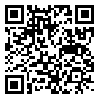BibTeX | RIS | EndNote | Medlars | ProCite | Reference Manager | RefWorks
Send citation to:
URL: http://jhsw.tums.ac.ir/article-1-5651-en.html
2- M.Sc., Faculty of Industrial Engineering, Khaje Nasir University of Technology, Tehran, Iran
Introduction: Nowadays, Snap-fits have many applications in the automotive industry, especially in assembly lines. They are used instead of the mechanical joints such as bolts, the cabling joints, and the car interior lining joints. Due to the special form of these fasteners, they are usually assembled manually. So, the form of clips’ contact area and the sharpness of the Snap-fits may cause the skin pains on the worker’s fingertips. This fact can cause an ergonomic study of these joints for reducing stress on workers and increasing their efficiency and health.
Material and Method: The Finite Element Method (FEM), which is one of the most recognized methods in numeric calculation and computer simulations, is used in order to study the pressures applied to skin due to the pain receptors in the middle layer of skin, and mechanical tensions created in the workers’ thumbs during their work with clips. In order to do this, first a 3D model of a thumb, based on the CT scan data taken from a real thumb sample was created. To identify the different layers of skin, Boolean operations were used. Afterwards, the limit conditions were determined and finally different structures were made to analyze the size, geometric shape and mechanical properties of the clips.
Result: In general, the results show that for those clips that their thumb touching surface is only round in edges, the most pressure on the middle layer of skin decreases as the radius of the round edge increases. Whereas such tensions, lightly increase as the radius increases in those clips that have a hybrid design (the combination of flat and curved surfaces). The result of the material analysis for clips shows that using elastic materials has only a limited effect on reducing tensions (only if rubber like materials are used) and for all tough materials, be it plastic or steel, the intensity of pressure tension would increase in the same manner on all the mentioned items.
Conclusion: The results suggest that during assembly work there are different factors which affect the tension on the fingers, factors like geometric structure, material and mechanical properties. However, the magnitude of those items’ effects are not the same, and that data can be observed while making an ergonomic design for clips.
Received: 2017/06/21 | Accepted: 2017/06/21 | Published: 2017/06/21
| Rights and permissions | |
 |
This work is licensed under a Creative Commons Attribution-NonCommercial 4.0 International License. |





